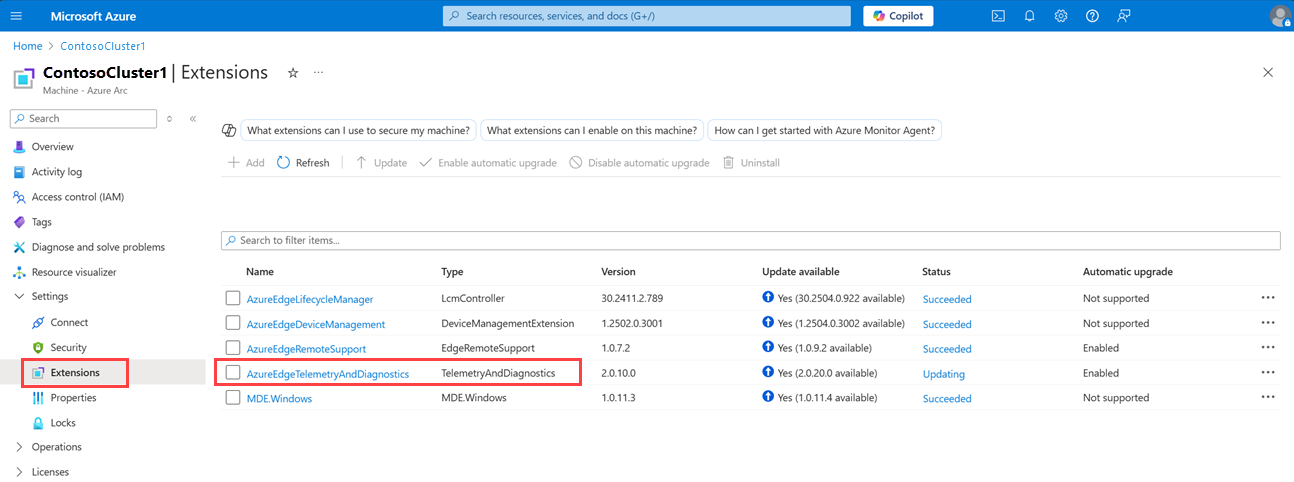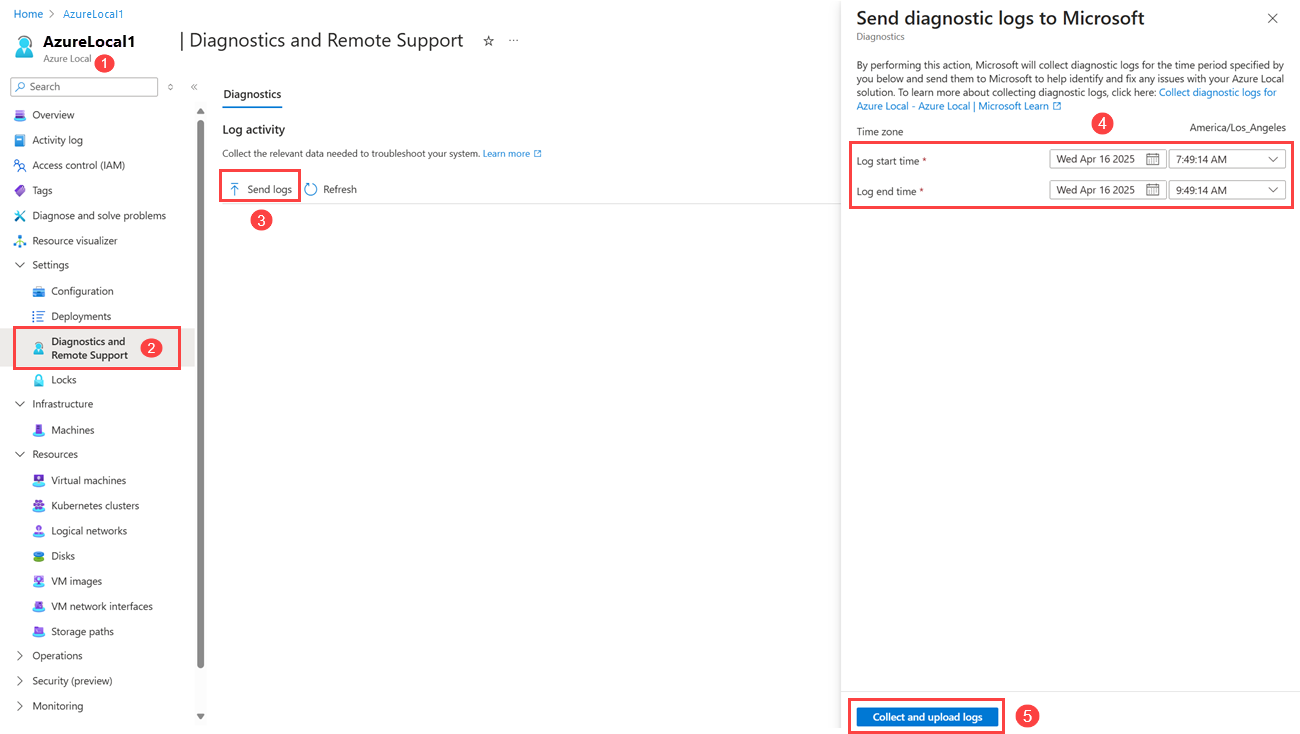Note
Access to this page requires authorization. You can try signing in or changing directories.
Access to this page requires authorization. You can try changing directories.
Applies to: Azure Local 2311.2 and later
This article gives an overview, lists benefits, and describes options for the telemetry and diagnostics extension in Azure Local.
About the extension
The Telemetry and Diagnostics Arc extension, shown as AzureEdgeTelemetryAndDiagnostics in the Azure portal, enables the collection of telemetry and diagnostics information from your Azure Local instance. This data provides Microsoft with valuable insights into the system's behavior.
Use the telemetry and diagnostics extension to monitor and assess the performance, functionality, and overall health of your Azure Local environment. The diagnostic information collection through this extension helps Microsoft more effectively troubleshoot and address any potential issues in your system.
For more information, see Azure Arc extension management on Azure Local.
Test observability
Test Observability is a feature designed to diagnose issues related to the telemetry and diagnostics extension. This feature ensures the proper functionality of the data transmission pipeline to Microsoft. It validates the existence and accuracy of configuration files, checks the status of relevant services, and confirms endpoint connectivity.
Here's sample output:
Test-Observability Report
Overall Result: PASS
General Information
GCSEnvironment: DiagnosticsPROD
GCSGenevaAccount: AzureEdgeObsPPE
GCSNamespace: AEOppeDiag
AEOAssemblyBuild: 99.9999.0.2
AEOClusternodeName: V-HOST1
AEONodeid: cluster-test1
AEOClusterNodeARCResourceUri: /Subscription/<subscriptionid>/
AEODeviceArmResourceUri: /Subscription/<subscriptionid>/
AEORegion: westeurope
AEOStampid: cluster-test1
AEOClusterName: my-cluster
AEOOSBuild: 10.0.25398.763
Test Name: TestTenantJSON
Overall Result: PASS
Has Repair Action: No
Repair Description: N/A
Benefits
Some advantages of the telemetry and diagnostics extension include:
Improved compliance: Lets telemetry and diagnostics data comply with regional service and data residency requirements during data uploads.
Simplified log gathering and faster case resolution: Lets you easily collect diagnostics logs. Microsoft Support and the engineering team use these logs to fix system issues quickly.
Reduced update impact: Lets you update your Azure Local instance without disruption and doesn't require a reboot of the host machine.
Resource consumption controls: Makes sure that no more than 5 percent CPU is used. The Azure Arc extension framework enforces control of the process.
Prerequisites
To use the telemetry and diagnostics extension, make sure you have an Azure Local instance that's deployed and running.
Data collection consent
Microsoft collects data in accordance with its standard privacy practices. The new telemetry agent doesn't override your existing control setting.
If you withdraw your consent for data collection, any data collected before withdrawal isn't affected. Microsoft continues to handle and use the data collected in accordance with the terms that were in place at the time of the data collection.
Consider these points about data collection:
Learn how Microsoft handles and uses your data. Review Microsoft's privacy practices and policies.
Learn the implications of consenting to data collection and withdrawing consent. Consult legal or privacy professionals to make sure you understand.
Data privacy considerations
Azure Local routes system data back to a protected cloud storage location. Only Microsoft personnel with a valid business need are given access to the system data. Microsoft doesn't share personal customer data with third parties, except at the customer's discretion or for the limited purposes described in the Microsoft Privacy Statement. Data sharing decisions are made by an internal Microsoft team including privacy, legal, and data management stakeholders.
Don't include any confidential information or personal information in resource or file names. For example, VM names, volume names, configuration file names, storage file names (VHD names), or system resource names.
Diagnostic data collection
To identify and fix issues with your Azure Local solution, you can collect and send diagnostic logs to Microsoft using one of the following methods:
Send-DiagnosticData- The Azure portal
To manually collect and send diagnostic logs to Microsoft, use the Send-DiagnosticData cmdlet from any Azure Local machine. We recommend that you use this cmdlet to upload diagnostic data before opening a support case.
For more information, see Collect diagnostic logs.
To collect and send diagnostic logs to Microsoft using the Azure portal, follow these steps:
- In the Azure portal, navigate to your Azure Local instance.
- In the left pane, under Settings, select Diagnostics and Remote Support.
- Select Send logs.
- In the Diagnostics pane, set your Log start time and Log end time.
- Select the Collect and upload logs button.
Support operations
You can grant remote access to Microsoft support by using remote support operations. After you enable remote support, assign a specific access level to Microsoft support based on your requirements. For more information, see Enable remote support diagnostics and the List of Microsoft support operations.
Next step
Learn about Azure Arc extension management on Azure Local.

